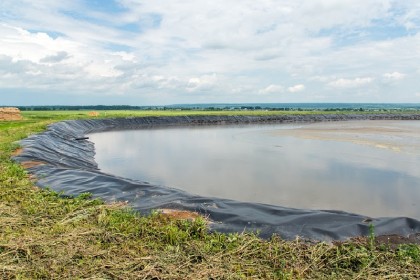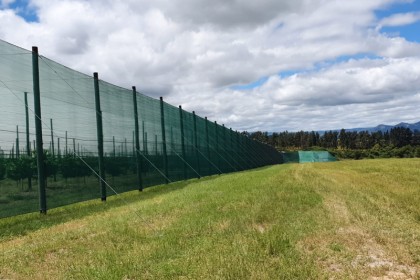
Isomate Mating Disruption: New Thoughts
David Thomas Hendricks, Development National Manager
Introduction
Nulandis has a long and proud record of pioneering the introduction of semiochemicals or mating disruption, as an effective insect management tool in IPM programmes across South Africa. Semiochemicals are organic molecules produced by insects to communicate albeit to locate a mate, avoid detection or find a food source. Semiochemicals are insect specific, making them valuable tools for insect monitoring, and more recently insect management. This zero residue technology provides farmers with a valuable tool to meet international residue limits on crops, and through our collaboration with ShinEtsu and CBC of Japan, Nulandis has been instrumental in assisting farmers improve crop quality and yields, while meeting phytosanitary requirements. These products are marketed through Nulandis under the Isomate® brand.
The Principles of Mating Disruption
Pheromones are semiochemicals which allow for the communication between individuals of the same species. There are two general ways or mechanisms by which mating disruption is achieved using pheromones. i) By competitive mating disruption where males are diverted from orienting to females due to competing attraction of nearby false trails emanating from pheromone dispensers, or ii) by non-competitive mating disruption where exposure to synthetic pheromone subsequently reduces or blocks the male's ability to sense pheromone normally - and this happens without attraction (1). Non-competitive mating disruption can be achieved by sensory adaptation of the pheromone receptors on the antennae, habituation of the central nervous system to pheromone, imbalance of the sensory system and camouflage of the natural pheromone plume from calling females.
If one takes a look at a female codling moth, false codling moth or any other moth that uses pheromones as long distance communication for mating, one can observe the logic behind the Isomate® dispensers design. The pheromone emitting surface on a female moth is concentrated into a tiny point source of glandular tissue near the tips of their abdomen. This results in a concentrated plume of pheromone that is released into the atmosphere for male moths to detect. Male moths have developed the ability to visually lock onto the wind (its direction and speed) and steer upwind whenever they come into contact with airborne pheromone plume strands (2). As in nature, the principles of pheromone mating disruption mimic the wind dispersed pheromone plume to provide a false signal for males to follow upwind, effectively disrupting the mating behaviour with females.
The Isomate® dispensers have the most compact design on the market, generating a stronger plume strand which stays more concentrated downwind and initiates the upwind flight of the male moth seeking a mate. A stronger pheromone plume strand is more effective at making contact with a male moth’s antennae at above-threshold levels further downwind, providing more effective coverage across the orchard. This is in contrast to most hand applied dispensers available in South Africa which have a less compact design and which generates weaker plume strands that fail to lock-in male moths onto the false pheromone signal (see figure 1).
In an experiment conducted by TC Baker et al, Isomate® pheromone release was determined when orientated to the wind in different directions, from 18 – 106.2 ng/min (nanograms per min) while a larger surface area dispenser released 2.9 – 84.7 ng/min (2).
A particular point of discussion in mating disruption is the height at which to place a dispenser in the tree canopy. Current label recommendation states that the dispenser should be hung in the top third or top 70 cm of the canopy. When researchers looked at the distribution of moths within the tree canopy they found that both male and female moths are distributed evenly between low (0 – 1.5 m), middle (1.5 – 3.0 m) and upper (3.0 – 4.5 m) parts of the tree canopy during periods of female calling and male searching periods (3).
Traps are used both as a monitoring tool and in research to determine the effectiveness of mating disruption where we strive to achieve trap shutdown (zero moth catches in traps). In Figure 2, we can see the results of research done when dispensers were applied at 2 m and 4 m (1000 dispensers per ha, 500 points, 2 dispensers per tree), 4 m (1000 dispensers per ha, 1000 points, 1 dispenser per tree) and 2 m (1000 dispensers per ha, 1000 points, 1 dispenser per tree) tree canopy heights in 4 - 5m mature apple trees. Traps were hung high at 4 m and low at 2 m canopy heights. One can see that dispensers applied at 4 m recorded slightly lower trap catches of sterile moths released as a direct challenge to mating disruption.
Pheromones are heavier than air and the pheromone plumes will start at 4 m and gradually move lower, leading to mating disruption lower down in the canopy. Dispensers applied at 4 m generates a 1000 plumes, which moves down the canopy. While the dispensers applied at 2 and 4 m will lead to 500 plumes at 4 m height and 500 plumes at 2 m height, which moves gradually down the canopy. Thus one can see from the slightly higher trap counts at 4 m for this treatment, which is a result of less pheromone plumes at this height in the canopy.
What is new in the world of semiochemicals?
Having recently attended the International Organisation of Biocontrol (IOBC/WPRS) PheroFIP 19 conference on mating disruption and biological control, provided some good insights into the challenges that are being faced in global markets. The semiochemical sector is facing massive challenges to provide solutions for farmers regarding residues on crops in the face of growing pest pressure and consumer demand for low residue crops. I was reassured that Nulandis will remain at the forefront of this technology by the fact that our partners ShinEtsu and CBC had the biggest presence at the conference and that Isomate® is still the dominant mating disruption product globally.
Research is being conducted to develop a mating disruption product for Pernicious scale (Quadraspidiotus perniciosus) on pome -and stone fruit. An interesting area of research focussing on kairomones, i.e. chemical substance that benefits the receiver but not the emitter. Here the concept is to use kairomones to manage beneficial insects e.g. spraying an orchard with a kairomone that attracts predators of aphids. New research is also being carried out to develop predicative models for codling moth flights, wing beat sensor based smart traps as well as attract and kill devices for thrips control.
Closer to home, Nulandis is currently in development of an aerosol dispenser for codling moth (Isomate® CM-Mist), mating disruption for vine mealybug in grapevines (Isomate® VMB) and a replacement product for Isomate® OFM Rosso (Isomate® OFM-TT).
References
- Larry J. Gut and James R. Miller. Mating disruption (excerpt from book chapter currently in review).
- T.C. Baker, A.J. Myrick and K.C. Park (2016) Optimizing the point-source emission rates and geometries of pheromone mating disruption mega-dispensers. J of Chem Ecol, Published online.
- David L. Epstein, Lukasz L. Stalinski, Jamer R. Miller, Matther J. Grieshop and Larry J. Gut (2011) Effects of reservoir dispenser height on efficacy of mating disruption of codling moth (Lepidoptera: Tortricidae) in apple. Pest Manag Sci 67: 975 – 979.
For other agricultural products and services, click here.












